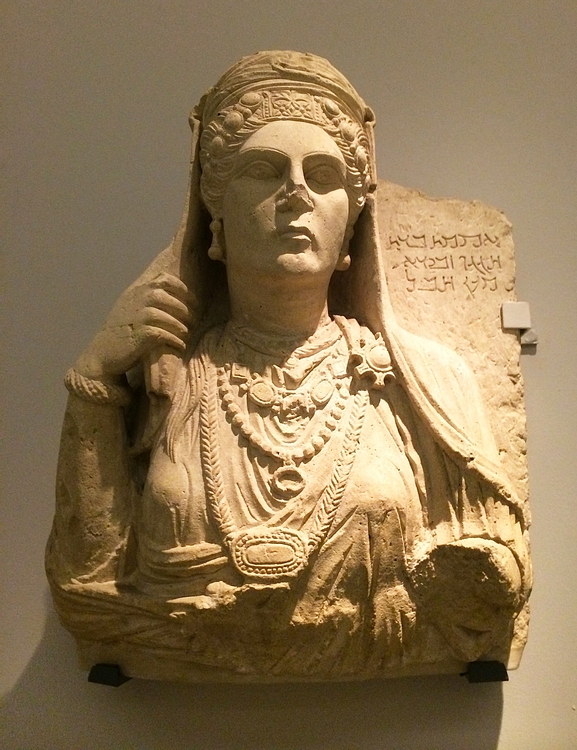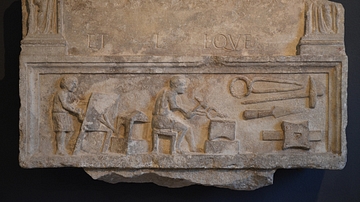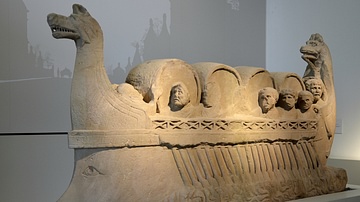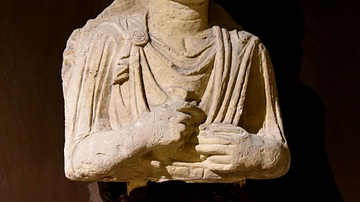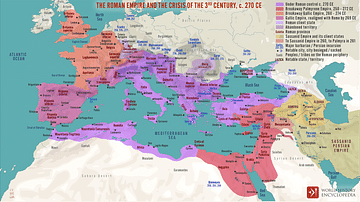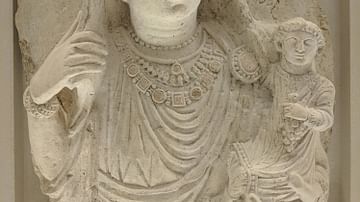Illustration
This funerary bust of a Palmyrene lady dates from c. 175-200 CE and is made of limestone. It is originally from Palmyra, Syria. (Inscribed in Aramaic: ‘Aqmat, daughter of Hagagu, descendant of Zebida, descendant of Ma'an. Alas!") The inhabitants of the wealthy city of Palmyra buried their dead in family or communal tombs containing rows of individual compartments. Each was sealed with a plaque bearing an elaborate and highly realistic portrait of the deceased. Known as "nefesh" ("soul" or "personality"), these portraits enabled the owner to exist in the afterlife.
External Links
Cite This Work
APA Style
Wiener, J. B. (2017, November 08). Funerary Bust of a Palmyrene Lady. World History Encyclopedia. Retrieved from https://www.worldhistory.org/image/7574/funerary-bust-of-a-palmyrene-lady/
Chicago Style
Wiener, James Blake. "Funerary Bust of a Palmyrene Lady." World History Encyclopedia. Last modified November 08, 2017. https://www.worldhistory.org/image/7574/funerary-bust-of-a-palmyrene-lady/.
MLA Style
Wiener, James Blake. "Funerary Bust of a Palmyrene Lady." World History Encyclopedia. World History Encyclopedia, 08 Nov 2017. Web. 24 Apr 2024.
